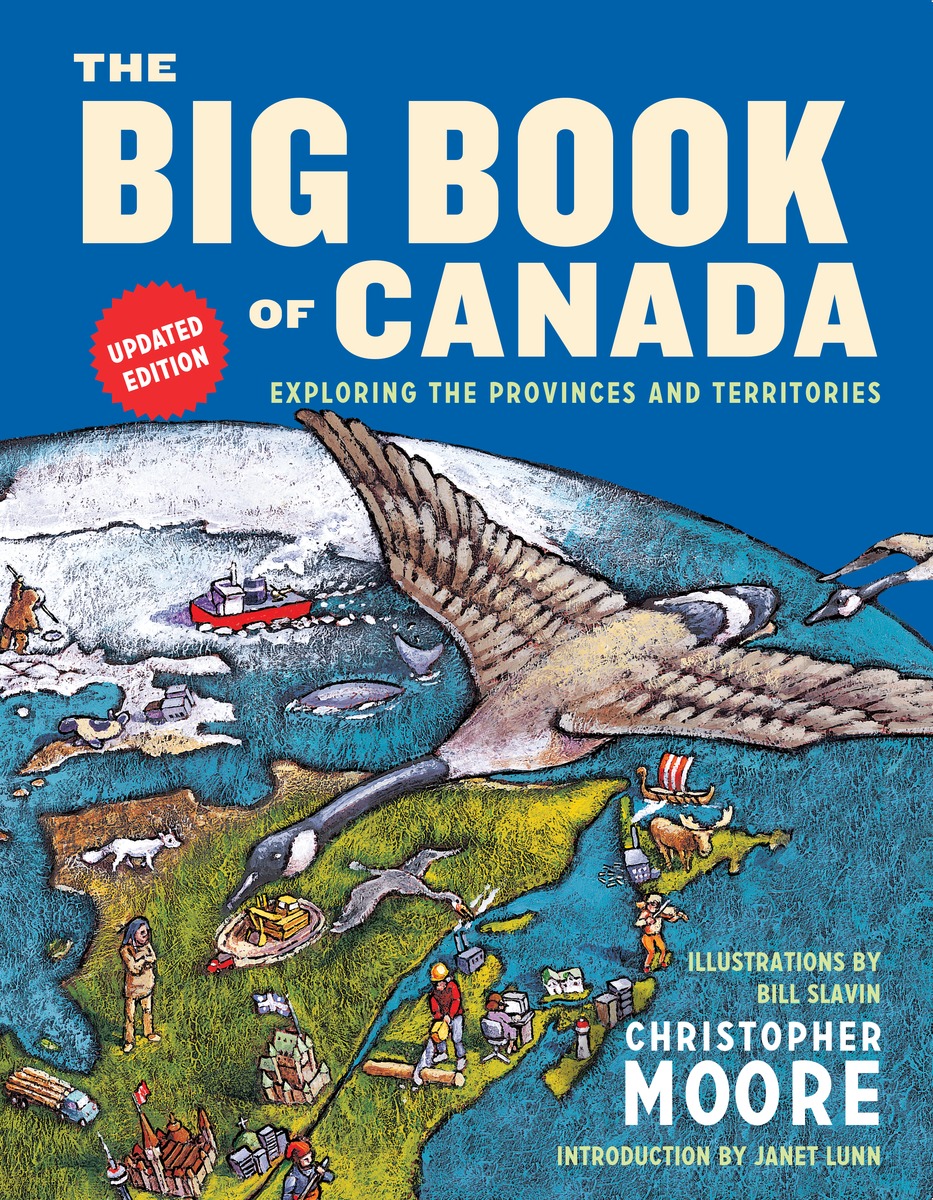| ________________
CM . . .
. Volume XXIII Number 31. . . April 21, 2017
excerpt:
To read The Big Book of Canada is an absolute delight! Released in time for Canada’s 150th birthday, this updated edition presents information about our nation in an extremely engaging manner that will appeal to middle schoolers (and adults, too). Following an introduction by Janet Lunn, there is one chapter devoted to each province and territory, moving from east to west and then northward. Each chapter is comprised of a map, a description of the area’s geography, an event timeline with a paragraph for each important date in the area’s history, information about early peoples and settlements, economy, famous “sons and daughters”, governance, and major cities. There is also an easy recipe for a well-known traditional dish, some examples being tourtičre from Quebec, Saskatoon berry and rhubarb jam from Saskatchewan, and Namaimo Bars from British Columbia. The chapter concludes with an “At a Glance” page that lists quick facts (the date that the province/territory joined Confederation, the provincial motto and flower, the area, highest point, growth rate, capital and main cities, and the official government web site) and a province-related anecdote, historical account or poem. For instance, for Newfoundland, there is a dictionary of colloquialisms such as dumbledore (bumblebee), switchel (cold tea) and flahoolach (lavish or extravagant); Nova Scotia’s offering is the lyrics to the “Farewell to Nova Scotia” song; and Ontario’s entry is a story about the many daredevils who have gone over Niagara Falls in a barrel or by walking a tightrope from one side of the falls to the other. But what is most captivating are the little known facts about Canada. Readers will be fascinated by tales of Quebec strongmen Joseph Montferrand and Louis Cyr, and Anna Leonowens, whose book about her job as a governess to 67 children in the Siamese King Mongkut’s royal household inspired the musical “The King and I”. In her later years, Leonowens moved to Halifax and helped found the Nova Scotia College of Art and Design. They also might not be aware that the best-known residents of Sable Island in Nova Scotia are wild horses, or that some New Brunswick rivers are privately owned and for the exclusive use of sport fishermen who belong to private clubs. The last few pages of the book provide a unique final chapter entitled “Reading About the Big Book”. Here, the author talks briefly about some of the Canadian novels set in each province- Roch Carrier’s The Hockey Sweater, Sheila Burnford’s animal story, The Incredible Journey, set in northern Ontario, and Farley Mowat’s Owls in the Family, a story set in Saskatchewan, to name a few. There is much to enjoy in The Big Book of Canada, not only the fluid text that is presented in a pleasing, conversational writing style, but also the abundant illustrations which consist of colour photographs, black and white archival photographs, and award-winning artist Bill Slavin’s amazing watercolours which add richness and warmth to the pages. The illustrations are well suited to the text. A table of contents and an index are included. Jam-packed with interesting facts, this wonderful reference book is both educational and fun and a thoroughly enjoyable read! Highly Recommended. Gail Hamilton, a former teacher-librarian, lives in Winnipeg, MB.
To comment
on this title or this review, send mail to cm@umanitoba.ca.
Copyright © the Manitoba Library Association. Reproduction for personal
use is permitted only if this copyright notice is maintained. Any
other reproduction is prohibited without permission.
Next Review | Table of Contents For This Issue -April 21, 2017 |
